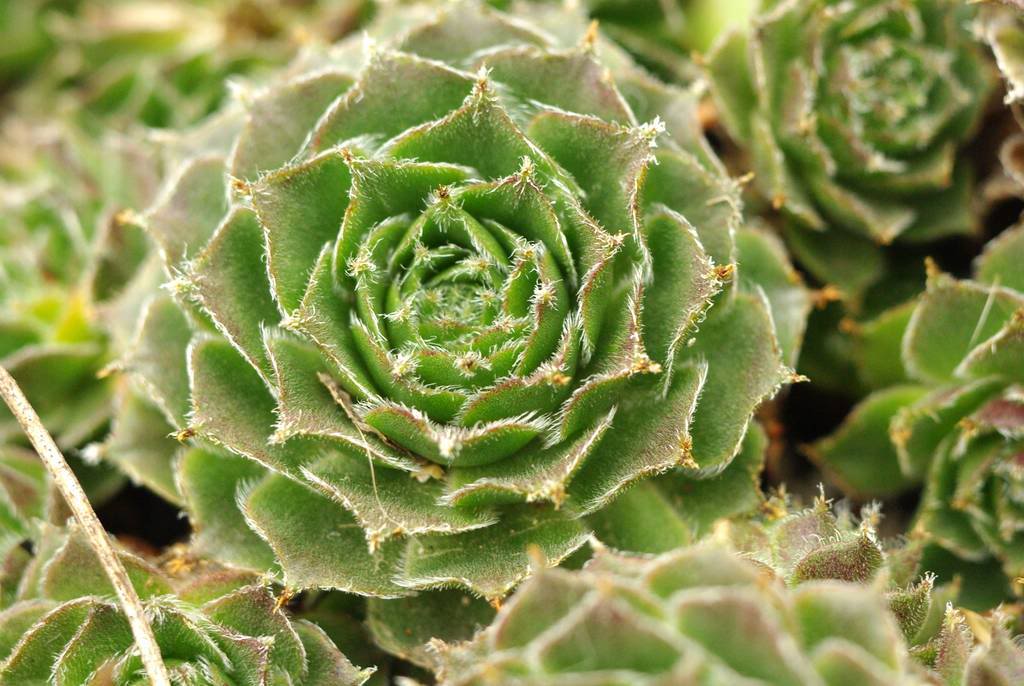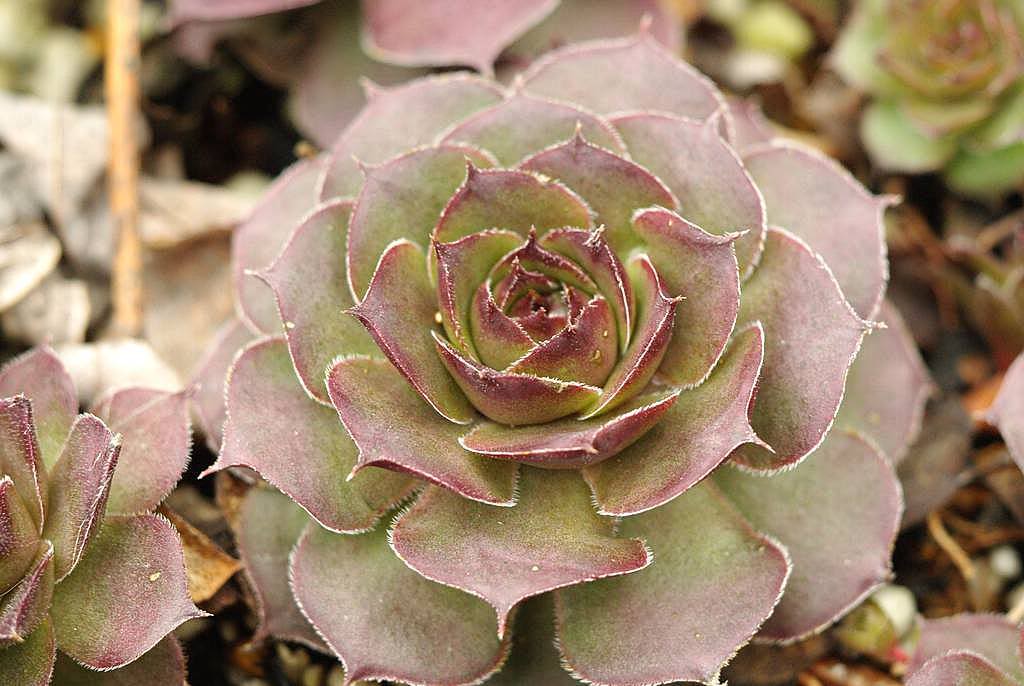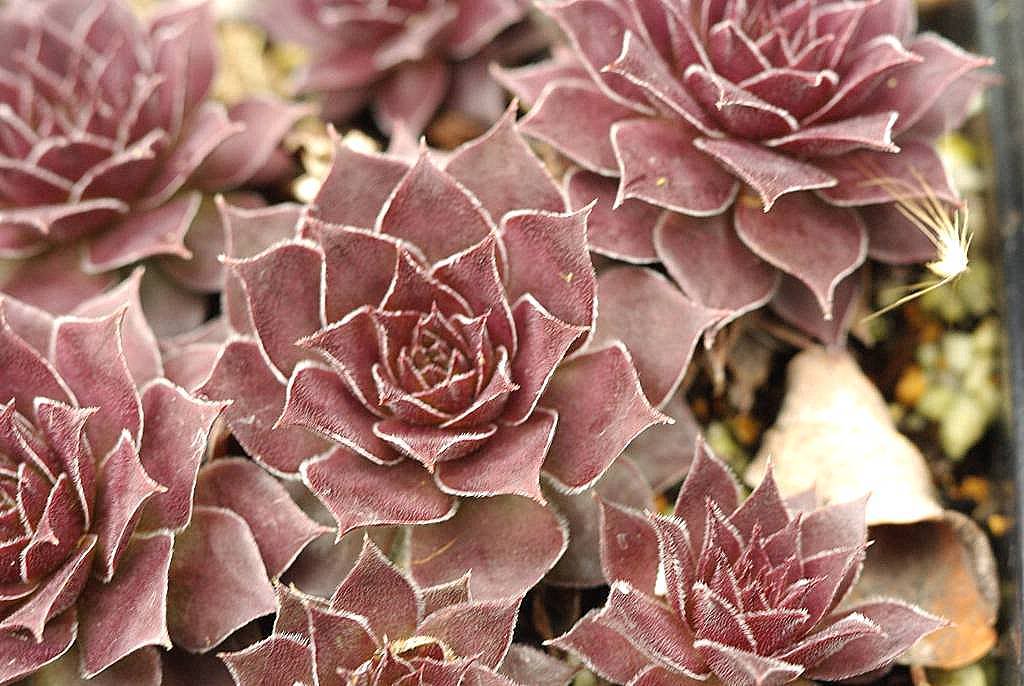Almost exactly a year ago I purchased and received several different sempervivum plants. I think there were 30 different types? This post talks about them at the time I got them, but I figured it was about time for an update.
I've learned a few things about these "hen and chicks", and some of that knowledge thwarted my original plans for these cool and multiplying succulents.
First, I learned that they change colors a few times a year. Like many of the sedums, they reach their most colorful point in late winter or early spring.
Second, they also change shape a bit over the year, tightening up somewhat for the winter, and relaxing a bit during the growing season. Not surprising I guess.
So far the things I've learned about semps haven't affected what I did with them. Not so for the next items.
Third, some (all?) semps don't like blazing hot sun with super-hot temperatures. Or maybe heat plus humidity. Whatever the exact combination of St. Louis summertime conditions is they don't like, they really don't like them. You see, some of my semp varieties withered in the heat, and died. Perhaps they weren't well-rooted, or maybe they got too much water at times which led to rot, but I lost a few plants. I should also point out that the semps that didn't die (most of them) still looked kind of "tired" during the heat of summer.
This is important to know because my plan was to plant these in an all-day-long blazing full sun area. I may have to change that strategy.
Fourth: deer eat semps. This was probably the most important lesson, and luckily it happened early, before I planted. I placed one of the larger pots of semps out in the bed in which I was going to create a carpet of textures and colors, provided by a sea of semps. I left it there for a day or two, and the majority of the biggest plants in there ended up in a deer stomach. I had no idea they would find them palatable, but a quick Google search for "deer eat sempervivum" pointed me to this post, confirming what I found -- but on a larger scale.
So the plans for that bed changed, and instead I did this with it.
My semps then spent the year in pots for the most part, while I thought of what exactly I was going to do with them. (I'm still thinking by the way.)
A few went into that hypertufa pot I made last winter:
Most just spent the winter up against the house:
They're cold-hardy enough to handle our winters this way, or at least I think they are. Since we didn't have a typical winter this year I don't know for sure.
Now that I've seen them showing their winter colors again, I'm eager to get as many of them growing as possible. My goal is still to have wide patches of these somewhere in my garden.
For the near future though, I'll have to just enjoy them in their pots.
I certainly will enjoy them!
.











Alan, I’m in Houston, Texas which is notoriously hot and humid. I find that many of my succulents need a little afternoon shade in the summer months. However, in the winter they enjoy full sun. They grow best for me in containers. That way I can also control their soil and drainage, plus move them in and out of the sun as need be. I love your blog! I can see you have a real passion for plants. I’m always looking forward to your next post.
ReplyDeleteI've just about given up on sempervivums for the reason you stated: they don't like hot summers. That makes senses, seeing how they come from alpine climates. In the shade, they're OK, but in the sun they croak even when well rooted.
ReplyDeleteI love these plants, but don't always have good luck with them. Thanks for the tips!
ReplyDeleteI've always walked past these, but your photos have shown them to me in a new light. I'll have to stop and look at them next time I see them at a nursery. Your photos makevthem look interesting and ... Beautiful.
ReplyDeleteI've found that repellants only work until it rains which happens pretty frequent here, but whenever I use deer netting, they never enter for some reason.
ReplyDeleteI don't think they are intelligent enough to try to jump over the netting or go under it.